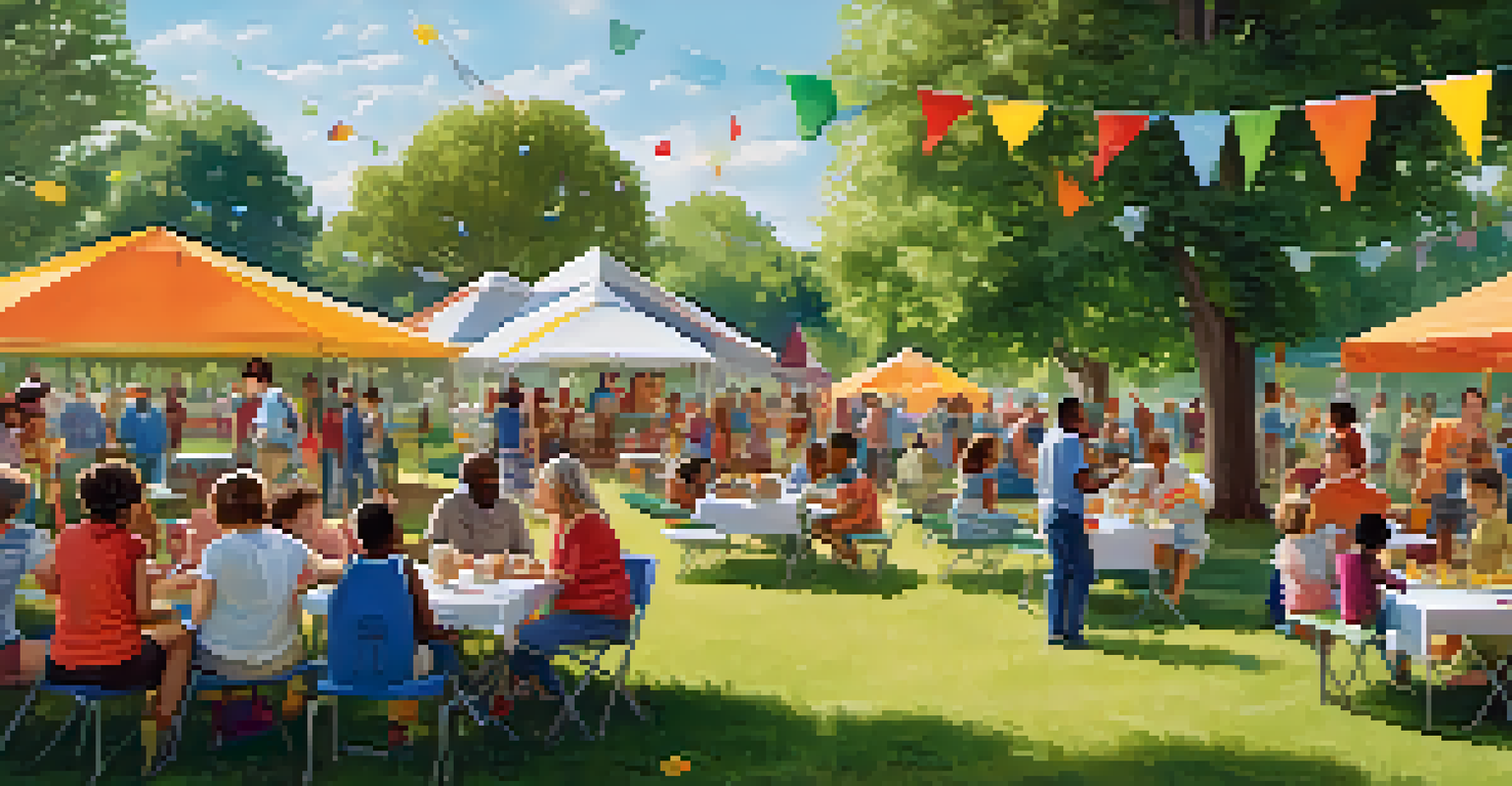The Influence of Local Communities on Multi-Generational Living

Understanding Multi-Generational Living Dynamics
Multi-generational living is a household structure where multiple generations reside together, often including grandparents, parents, and children. This arrangement can provide emotional support and financial stability, as family members share resources and responsibilities. However, the dynamics of these households can be influenced significantly by the surrounding local community, which shapes their experiences and interactions.
Family is not an important thing. It's everything.
For example, communities with strong family-oriented values may encourage more families to embrace multi-generational living. In contrast, neighborhoods that prioritize independence might create challenges for these households to thrive. Understanding these dynamics helps explain the varying prevalence and acceptance of multi-generational living in different areas.
Moreover, the social support systems within a community, such as local organizations and resources, can impact how well families adapt to this living arrangement. When communities are supportive, families tend to flourish, demonstrating the importance of local influences on multi-generational households.
The Role of Cultural Norms in Family Structures
Cultural norms play a significant role in shaping the acceptance and practice of multi-generational living. In many cultures, living with extended family is a tradition that emphasizes collectivism and support. For instance, in some Asian and Hispanic communities, multi-generational households are common and celebrated as a way to preserve family ties and heritage.

Conversely, in cultures that prioritize individualism, such as in parts of the United States and Western Europe, multi-generational living may be less common. Here, independence is often seen as a sign of success, which can lead to a preference for separate households. This cultural backdrop can affect how families perceive and adapt to living together across generations.
Benefits of Multi-Generational Living
Living together across generations fosters emotional support and financial stability through shared resources.
Thus, understanding these cultural differences is essential for community leaders and policymakers aiming to foster environments that support multi-generational living. By recognizing and respecting these norms, communities can create more inclusive spaces for families of all structures.
Community Support Services and Their Impact
Local communities can provide essential support services that significantly enhance the multi-generational living experience. These services may include childcare, healthcare, and social programs designed to assist families. For example, a community center offering activities for both seniors and children can foster intergenerational bonding, promoting a sense of belonging and togetherness.
The greatness of a community is most accurately measured by the compassionate actions of its members.
Moreover, access to resources like transportation and recreational facilities can alleviate some of the challenges faced by multi-generational families. When families feel supported by their community, they are more likely to enjoy the benefits of living together, such as shared responsibilities and emotional support.
However, the lack of these services can create barriers for families considering or currently engaged in multi-generational living. Therefore, it’s crucial for communities to evaluate and expand their support services to ensure they meet the needs of diverse family structures.
The Economic Benefits of Multi-Generational Living
Multi-generational living can lead to significant economic advantages for families and local communities. By pooling financial resources, families can reduce housing costs, which is particularly beneficial in areas with high living expenses. For instance, multiple generations sharing a single home can help alleviate the burden of mortgage payments and utility bills.
Additionally, this arrangement allows for shared childcare, enabling parents to return to work or pursue education without the hefty costs typically associated with daycare services. As a result, families can invest in their futures, contributing to the overall economic vitality of their communities.
Cultural Norms Shape Family Dynamics
Cultural attitudes towards family influence the acceptance and practice of multi-generational living arrangements.
However, the economic benefits extend beyond individual families; communities benefit as well. Increased financial stability among families can lead to higher spending in local businesses, stimulating the economy and supporting community growth.
Social Connections and Community Engagement
Multi-generational living fosters stronger social connections both within families and in the broader community. When families live together, they often engage more actively in community events and activities, creating a vibrant social fabric. This engagement can lead to friendships and support networks that benefit all community members, not just those in multi-generational households.
For example, families might participate in local festivals, volunteer opportunities, or neighborhood watch programs, strengthening their ties to the community. These interactions can also help break down barriers and stereotypes, fostering a sense of inclusivity and belonging.
Ultimately, when communities embrace multi-generational living, they cultivate an environment where social connections flourish, leading to healthier and more engaged populations.
Challenges Faced by Multi-Generational Families
While multi-generational living offers numerous benefits, it also presents unique challenges that can strain family relationships. Issues such as differing lifestyles, communication styles, and expectations can lead to conflicts. For instance, younger generations may prefer a more modern approach to parenting, while older generations might adhere to traditional values, creating tension.
Space and privacy can also become concerns, especially in smaller homes. When multiple families share a single living space, finding personal time and quiet can be difficult. As a result, it’s essential for families to establish clear boundaries and open lines of communication to navigate these challenges successfully.
Community Support Enhances Cohesion
Access to local services and resources is crucial for the success of multi-generational families, promoting interdependence and well-being.
Communities can play a pivotal role in addressing these challenges by promoting resources like family counseling and workshops on effective communication. By providing support, communities can help multi-generational families thrive despite the hurdles they may face.
Future Trends in Multi-Generational Living
As society evolves, so too does the concept of multi-generational living. Increasingly, people are recognizing the benefits of living together, and this trend is likely to continue. Factors such as rising housing costs, longer life expectancies, and changing family structures are driving more families to consider cohabitation as a viable option.
Moreover, with the growing acceptance of diverse family arrangements, we are witnessing a shift in societal attitudes toward multi-generational living. As younger generations prioritize family connections and support systems, communities may adapt to meet these changing needs, creating more inclusive environments.

In summary, the future of multi-generational living looks promising, with local communities playing a crucial role in shaping its evolution. By embracing and supporting these arrangements, communities can foster stronger family ties and enhance the quality of life for all residents.